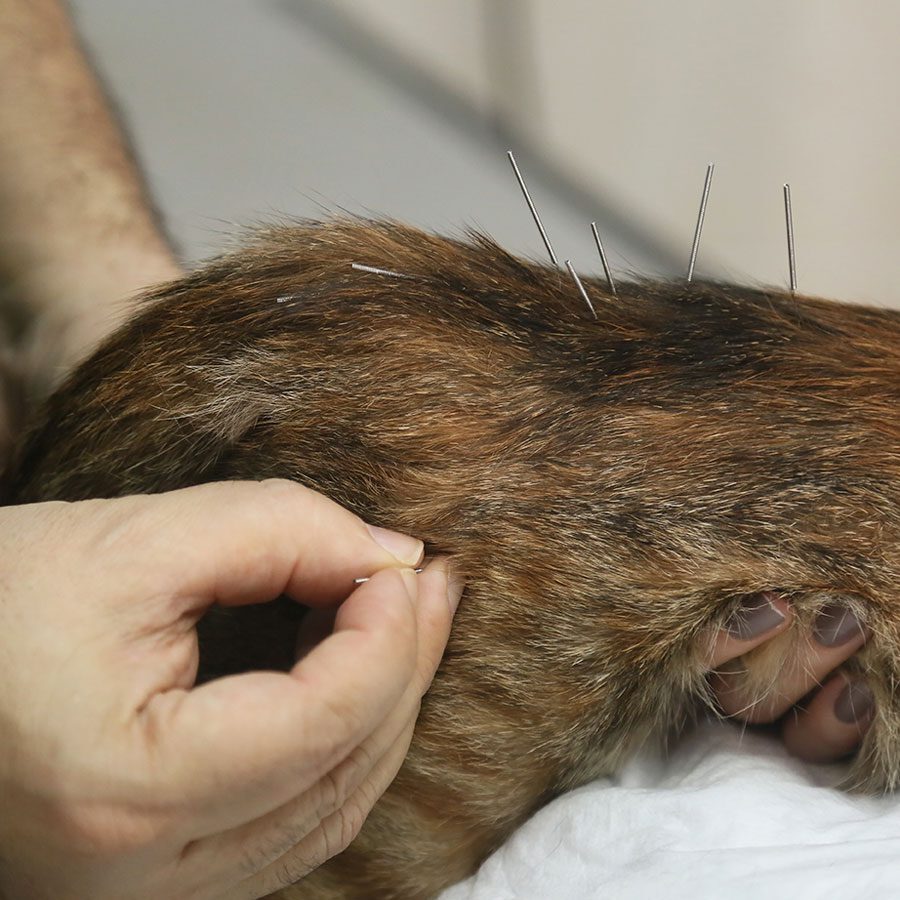
At All Pets Veterinary Hospital, we offer acupuncture as a holistic treatment to support your pet's health and improve their quality of life. Whether your pet is dealing with chronic pain, neurological issues, or stress, acupuncture is an effective, drug-free treatment that can complement traditional veterinary care.
Acupuncture involves the insertion of fine needles into specific points on the body, helping to stimulate healing, reduce inflammation, and restore balance within your pet’s body. It can be used to address a variety of conditions, from arthritis and back pain to digestive issues and anxiety.
Or give us a call at (603) 882-0494!
Meet Dr. Marlena Hollander: Integrative Medicine with Heart
Acupuncture and integrative care at All Pets Veterinary Hospital are led by Dr. Marlena Hollander, who is passionate about healing the whole pet—not just treating symptoms. With extensive training in Traditional Chinese Veterinary Medicine (TCVM) and a deep belief in the body’s ability to heal itself, Dr. Hollander combines modern veterinary science with time-tested holistic therapies. Her goal is to improve quality of life, restore balance, and support long-term wellness through compassionate, personalized care.
How Acupuncture and Traditional Chinese Veterinary Medicine (TCVM) Can Help
Acupuncture is part of Traditional Chinese Veterinary Medicine (TCVM), a holistic approach to healing that has been used for thousands of years. The goal of TCVM is to restore balance in the body, allowing it to heal itself naturally. TCVM works well in conjunction with conventional veterinary treatments, offering a comprehensive approach to managing chronic conditions and supporting overall health.
Acupuncture can be beneficial for pets with:
Arthritis & Joint Pain
Endocrine Issues
(e.g., Cushing's disease, diabetes)
Behavioral Issues
(e.g., anxiety, stress)
Cancer Support
Neurological Disorders
(e.g., paralysis, intervertebral disc disease)
Gastrointestinal Problems
(e.g., chronic vomiting, diarrhea)
Respiratory Conditions
(e.g., asthma, bronchitis)
The treatment works by stimulating specific points to help restore the body’s balance, reduce inflammation, and promote healing. It's an ideal option for chronic conditions that benefit from long-term management.
Ozone & Hydrogen Therapy for Pets
In addition to acupuncture, we also offer ozone and hydrogen therapy as part of our integrative services. These innovative therapies support the body’s natural healing processes by reducing inflammation, enhancing oxygen utilization, and promoting detoxification. Ozone and hydrogen therapy can be especially helpful for pets with chronic illness, immune system imbalances, and inflammatory conditions—providing another powerful tool in our holistic care toolbox.

What to Expect During & After Acupuncture Appointment

Your pet’s first acupuncture appointment begins with a thorough physical exam, including an evaluation of their pulse, tongue, and overall demeanor—key aspects of Traditional Chinese Veterinary Medicine (TCVM). Dr. Hollander will take time to understand your pet’s medical history, current health concerns, and your goals for treatment so she can create a personalized care plan.
The initial acupuncture session is typically gentle, relaxing, and noninvasive. Depending on your pet’s condition, Dr. Hollander may use dry needles, electroacupuncture (mild electrical stimulation), or aquapuncture (injecting small amounts of fluid into acupuncture points). Additional therapies—such as herbal medicine, dietary adjustments, ozone therapy, or hydrogen therapy—may be recommended to enhance results and support whole-body healing.
Most pets respond positively to treatment, often appearing calmer and more comfortable shortly after their session. Acupuncture is not a one-size-fits-all therapy, and the frequency of treatments will vary based on your pet’s condition. For chronic issues, we usually begin with weekly or biweekly sessions. As your pet begins to heal and show improvement, treatments are spaced out to maintain progress and promote long-term balance.
Acupuncture is an effective and safe way to enhance your pet's quality of life. Contact All Pets Veterinary Hospital today to see how acupuncture can help your pet feel their best!
Or give us a call at (603) 882-0494!
